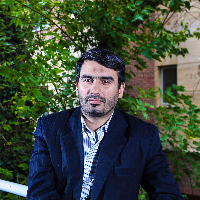Prioritizing sustainability strategies in the neighborhood with the Islamic approach
Urban planning seeks to improve the quality of life of the city›s residents. The way to achieve this is through recognizing the dimensions of life to the neighborhoods and the factors that influence it. On the other hand, the vitality of the environment is one of the missing circles in urban life. From the perspective of the West, sustainability has three dimensions: social, economic, and environmental. This research identifies the important dimension of semantic as the fourth factor of religious look. Because the perfection of life in the religious view is to reach the life of Tayyibah, and for this purpose, spiritual and spiritual dimensions of life should considered in order to establish human perfection and growth. This is possible if you live in a lively environment and neighborhood. In addition, no attempt has made to present a comprehensive approach to sustainable architecture based on Islamic teachings, which has the depth and comprehensiveness necessary for the functional dimensions of the environment and desirable neighborhoods. Therefore, this study aims to add the semantic dimension to the three dimensions of sustainability, to provide comprehensive model of sustainable architecture compatible with Islamic teachings to live and vitality of the neighborhoods. The method of this research is the combination method (quantitative and qualitative). Library studies have used to extract dimensions of sustainable living. In the next step, with a survey of experts and architects and urban planners, the significance of the model criteria has been determined, leading to a researcher-made questionnaire. Finally, the collected data analyzed through descriptive statistics. In this research, to identify the dimensions and characteristics of the Islamic area, the original Islamic texts (Quran and the traditions of the Imams (AS)) have investigated. The findings show that among the four dimensions of sustainability, social dimension in neighborhoods has the most importance in the vitality and living of the neighborhood. After that, the semantic dimension is most important in the religious space and the Neighborhood. In the third place, the environmental dimension in the neighborhood and the educational environment and at the last turn of the economic dimension in the neighborhood and the commercial space is contributing to the vitality of the neighborhood. At the end, Sustainable life strategies are given the priorities in the neighborhood design to create a neighborhood consistent with the Islamic worldview is developed
Neighborhood , Life , Sustainability , Islam , Vitality
-
Evaluation of the benefit of the audience's interactive features in the process of reading architectural precedents
Hamid Ghiyas, Mehdi Hamze Nejad*, Ahmad Amin Pour, Shahab Karimi Nia
Maremat & memari-e Iran, -
Approaches to the Formation of Schools and Their Organizational Models Based on the Fundamental Transformation Document
Mehdi Hamzenejad *, Mohsen Faizi, Hosein Abdolkhaleghi
Bagh-e Nazar, -
The semantics of life and vitality in Islamic teachings and its effect on the neighborhood
Sedigheh Moein Mehr*, , Farhang Mozaffar, Abdolhamid Noghrekar **
Journal of Islamic Architecture Research, -
A study of the sociability of commercial spaces in the Islamic attitude
Mehdi Hamzeh Nejad, Sedigheh Moin Mehr, Pariya Saadatjoo
Journal of Studies On Iranian - Islamic City,



